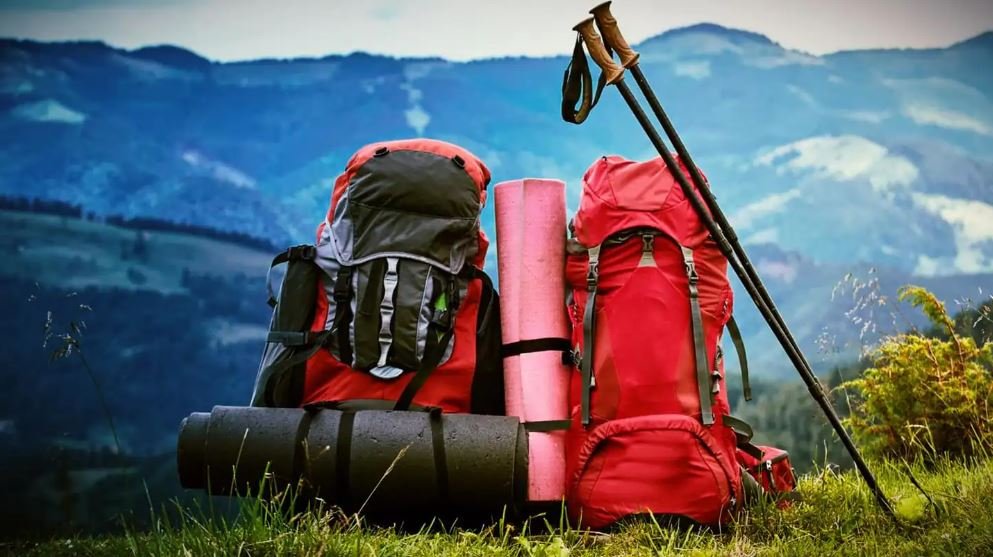You want to embark on a backpacking or outdoor trip but can’t help taking your favorite cheese. Is it entirely safe to take any cheese backpacking? If you must take a cheese backpacking, what variety should it be?
Backpacking is an outdoor activity involving carrying gear on one’s back and hiking for days. Backpacking takes more than a day, and it, therefore, includes camping outside.
Cheese can be a sweet delicacy and a better staple for outdoor trips once a good type of cheese is chosen. However, not all cheese is good for backpacking. The best cheese for a trip depends on how long a trip will take and the weather conditions.
Can I Take Cheese Backpacking?
Yes, cheese can be taken on a backpacking trip. However, not all cheese can be taken on a backpacking trip. Firm and semi-firm cheeses are best for backpacking, while soft and fresh unaged cheeses are a no-go area.
Fresh cheeses with ricotta, chevre, or mozzarella, and soft unaged cheeses such as brie and Camembert should be avoided while embarking on a backpacking trip. These cheeses have a higher moisture ability. Subsequently, they are more vulnerable to spoilage. And due to their higher moisture ability, they don’t last too long in heat or backpacks.
Hard-aged cheeses are stapled for backpacking journeys. They can adapt to a huge variety of weather conditions. Hard cheese will last from four to five days in cold weather. In hot weather, hard cheeses usually sweat and last for three days.
Hard Cheese like Asiago, Comté, Emmental, Gruyère, Manchego, and even Parmesan have lower moist abilities; hence they can last for days without becoming moldy or sour. The lower the moisture content, the higher the shelf life of cheese.
Any outdoor enthusiast who loves cheese and is willing to take cheese backpacking should opt for firm and semi-firm cheese such as Cheddar, Parmesan, or Asiago.
Top 10 Best Cheese For Backpacking [Hard, Soft, Everything In Between]
If you’re going on a backpacking trip, you’ll likely want to bring cheese. It’s a great food that can be eaten almost daily or at night. It’s also creamy and delicious, making it one of the best snacks for hiking.
But what kind of cheese should you bring on your next trip? There are so many options, and finding the right one for your needs cannot be easy. Here are some of the best cheeses for backpacking.
1. Cheddar
Cheddar is one of the best cheeses for backpacking. It is a hard cheese with lower moisture content; hence it does not spoil or get moldy easily. It can last for close to 2 weeks under an average temperature and 2-to 4 days at an extreme temperature.
You can pair cheddar with beef jerky, beer, or any wine. With this, cheddar is perceived by most outdoor enthusiasts as the best cheese for backpacking.
2. Gruyere
Second, on the list is Switzerland’s Gruyere. It is mild, nutty, sweet, and a little bit salty. It is a hard cheese. Gruyere has a longer shelf life. In other words, it can not spoil easily while on a backpacking trip.
You can eat gruyere however you want, melt it, eat on a cracker, or pair it with any drink of your choice; soft drinks, beer, or wine.
3. Guoda
Gouda is comfortably seated at no.3 for a couple of reasons. First, every gouda cheese usually comes enclosed in wax, making it longer and easier to take backpacking. Second, since Gouda has a wide variety of types, it is a base for interesting flavor combinations.
There is a lot to choose from, but some popular varieties include; black pepper, smoked Gouda, and jalapenos. Gouda can be eaten however you want. But most people prefer eating it by itself or on crackers.
4. Edam
Edam is similar to Gouda, although it does not come with varieties of flavor options like Gouda. It comes encased in a red wax, which unknowingly extends its shelf life and helps it last longer on a trip. It is sweet and a little bit lighter.
Edam can best be eaten with fruits or on crackers. Not that you can’t pair it with your favorite wine or beer, you can pair it with anything; so far, you are cool with the taste and flavor.
5. Parmesan
Parmesan, also known as Parmigiano-Reggiano, is another wonder cheese for backpacking. It is an Italian cheese produced from cow milk and aged for at least 12 months. Parmesan cheese is very versatile. It can be paired with a wide range of food, from desserts to appetizers.
Parmesan flavor can vary depending on the ripening time. Depending on its maturity, it can pair with meals, drinks, fruits, etc.
6. Asiago
Asiago cheese is a semi-hard Italian cheese made from cow’s milk. It is often used in grated form and can be sliced or baked. Asiago has a slightly nutty taste and is sometimes described as having hints of hazelnuts and mushrooms. One of the cheeses is recommended for high-altitude backpacking because it dodoesn’telt easily when subjected to heat and humidity.
7. Mozzarella
Mozzarella is an easy choice for backpacking cheese because it is versatile and pairs well with anything. It melts easily and can be used on pizza or grilled cheese sandwiches. Plus, mozzarella stores well in its original packaging at room temperature until opened. Just make sure it doesn’t get too hot. The last thing you want is melted mozzarella all over your baggies!
8. Parmesan
Parmesan is an excellent choice for backpacking, especially if you’re looking over a campfire. ItIt’sard and dry, which makes it easy to transport. When you’re ready to eat, grate it onto your food.
Parmesan can be used in various dishes, including pasta and pizza. While the flavor is rich and complex, no additional seasonings or additives exist. ItIt’slso relatively inexpensive compared to other cheeses on this list.
9. Goat Cheese
Goat cheese is soft and spreadable but still has enough texture to be crumbled over salads or baked into cookies. It also has a tangy flavor that pairs well with savory foods such as meats and vegetables. You can also crumble goat cheese onto salads or use it as a topping on pizza or pasta.
10. Cream Cheese
Cream cheese is probably the easiest type to travel with because it dodoesn’tequire refrigeration (unlike soft cheeses). It is smooth and creamy and makes a great spread for bagels or biscuits. You can also eat it straight out of the package as a snack.
Cheeses are delicious treats for backpackers; taking them on a backpacking trip can be wonderful. However, not all cheese is good for backpacking. Firm, semi-firm, hard, and aged cheeses are best for backpacking, while soft and fresh cheeses are no-go.
Cheese happens to be a nice option for backpacking. It can be eaten however you want, as snacks, on crackers, and with fruits and any of your favorite drinks.
How Long Will Cheese Last On Backpacking?
Soft cheeses such as Brie, Camembert, and Feta are portable because they dodon’teed refrigeration. These cheeses also pack well in a cooler or vacuum-sealed bag with an ice pack. However, they dodon’teep well at room temperature, so ththey’reest eaten within two days of purchase.
Hard cheeses like Parmesan and Cheddar will last longer than soft cheeses but still require refrigeration after opening. ThThey’relso much more difficult to transport because they’re harder to pack and heavy than soft cheeses.
How Do I Keep Cheese Fresh When Backpacking?
If you like cheese and are backpacking, it can be difficult to find a way to keep it fresh. The best way to store cheese is to keep it in an airtight container or zip bag in a cool place away from sunlight.
How Long Can Cheese Sit Out Backpacking?
The main thing is that cheese needs a refrigerator to stay fresh and may last just five days if it is kept cool. So, if you don’t have access to an ice chest or cooler, don’t bring any cheese. If you’re going on a long hike or camping trip, refrigerate your cheese until you’re ready to pack it up. Then wrap it tightly in foil and place it in an insulated container like a lunchbox with extra ice packs.
- Hard Cheeses: Cheeses like cheddar, Parmesan, and Gouda can be safely stored for up to a week on a backpacking trip, as long as they are properly wrapped and stored at a temperature of 40°F or below. These types of cheese are less likely to spoil due to their lower moisture content.
- Semi-Soft Cheeses: Semi-soft cheeses like Colby, Monterey Jack, and Swiss can be safely stored for up to 3-4 days on a backpacking trip, as long as they are properly wrapped and stored at a temperature of 40°F or below.
- Soft Cheeses: Soft cheeses like brie, Camembert, and feta have a shorter shelf life and should be consumed within 1-2 days of opening. They should be stored at a temperature of 40°F or below and wrapped in breathable materials.
How Much Cheese Should I Take For A Three Days Journey?
As much as you can carry. There’s no such a thing as too much cheese. A three-day journey will be over before you know it! YoYou’llave time to rest and recuperate but not time for a proper meal. Bring some cheese, fruit, and nuts to tide you over until you can find something better to eat (or someone willing to share).
How Can I Prevent Cheese From Melting on a Backpacking Trip in Hot Weather?
One challenge you might face is keeping your food from melting or spoiling. And if you’re a cheese lover, you might wonder how to prevent your cheese from melting on your trip. Fortunately, there are several strategies you can use to keep your cheese from turning into a gooey mess.
1. Choose the Right Cheese
The first step in preventing cheese from melting on backpacking is choosing the right cheese type. Hard, aged cheeses like cheddar, Parmesan, and Gouda tend to hold up better in hot weather than soft, fresh cheeses like brie or goat cheese. This is because harder cheeses have a lower moisture content and are less likely to melt or spoil.
2. Pack Properly
How you pack your cheese can also affect whether it melts or spoils. Cheese should be wrapped in breathable materials like parchment paper or cheese paper, which allow air to circulate and prevent moisture buildup.
Avoid using plastic wrap or containers, which can trap moisture and lead to spoilage. Additionally, it’s a good idea to pack your cheese in a cooler or insulated bag with ice packs or frozen water bottles to keep it below 40°F.
3. Freeze Your Cheese
Another option for preventing cheese from melting on a backpacking trip is to freeze it before you go. Hard cheeses can be frozen without affecting their texture or flavor. Wrap the cheese tightly in parchment or paper, then wrap it in a plastic or aluminum foil layer.
Place the wrapped cheese in a freezer-safe bag and freeze for at least 24 hours before your trip. When you pack your backpack, transfer the frozen cheese to a cooler or insulated bag with ice packs to keep it cold.
4. Eat Your Cheese Early on the Trip
If you’re worry about your cheese melting or spoiling, one strategy is to eat it early in your trip. Plan to have cheese as a snack or meal during your trips when temperatures are likely cooler. This will reduce the risk of your cheese melting or spoiling later in the trip.
5. Consider Non-Dairy Alternatives
If you’re still worried about your cheese melting on backpacking, consider packing non-dairy alternatives like nut-based cheeses or vegan cheese substitutes. These alternatives are often less likely to melt or spoil in hot weather and can provide a similar flavor and texture to traditional cheese.

Simple Backpacking Mac and Cheese Recipe
Equipment
- Camping stove
- Pot
- Spoon
- Measuring cup
Ingredients
- 1 cup macaroni
- 1/4 cup powdered milk
- 1/4 cup cheddar cheese powder
- 1 tbsp butter powder
- Salt and pepper
- Water
Instructions
- First, you need to boil the macaroni in a pot of water until it's al dente. Make sure you follow the package instructions for the cooking time. Once the macaroni is cooked, drain the water and set it aside.
- In a separate bowl, mix together the powdered milk, cheddar cheese powder, and butter powder. You can find these ingredients at your local grocery store or online.
- Add the powdered mixture to the pot where you cooked the macaroni. Then, add enough water to cover the mixture and stir well. You can add more or less water depending on how thick you want the sauce to be.
- Place the pot on your camping stove and heat it over medium heat while stirring constantly. Make sure the mixture doesn't boil over or burn. Cook for about 5-7 minutes or until the sauce is thick and creamy.
- Add salt and pepper to taste. You can also add other seasonings or spices if you prefer.
- Finally, add the cooked macaroni to the pot and stir well to combine. Cook for another minute or two until the macaroni is heated through.
- Remove the pot from the stove and let it cool for a few minutes before serving.
Video
Notes
- You can use different types of pasta such as penne, fusilli, or shells instead of macaroni.
- If you don’t have access to powdered milk, you can use fresh milk or non-dairy milk instead. Just make sure to adjust the water ratio accordingly.
- You can add other ingredients such as canned tuna, diced ham, or frozen peas to make the meal more filling and nutritious.
- Store the mac and cheese in a resealable plastic bag to save space and reduce weight.
Conclusion
Cheese can be a delicious and convenient addition to your backpacking meals, but it’s important to consider a few factors before packing it for your trip. Soft cheeses like brie or goat cheese might not hold up well in hot weather, while hard, aged cheeses like cheddar or Parmesan are more likely to survive.
Packing your cheese properly is important to prevent spoilage and keep it at a safe temperature to avoid foodborne illness.



















